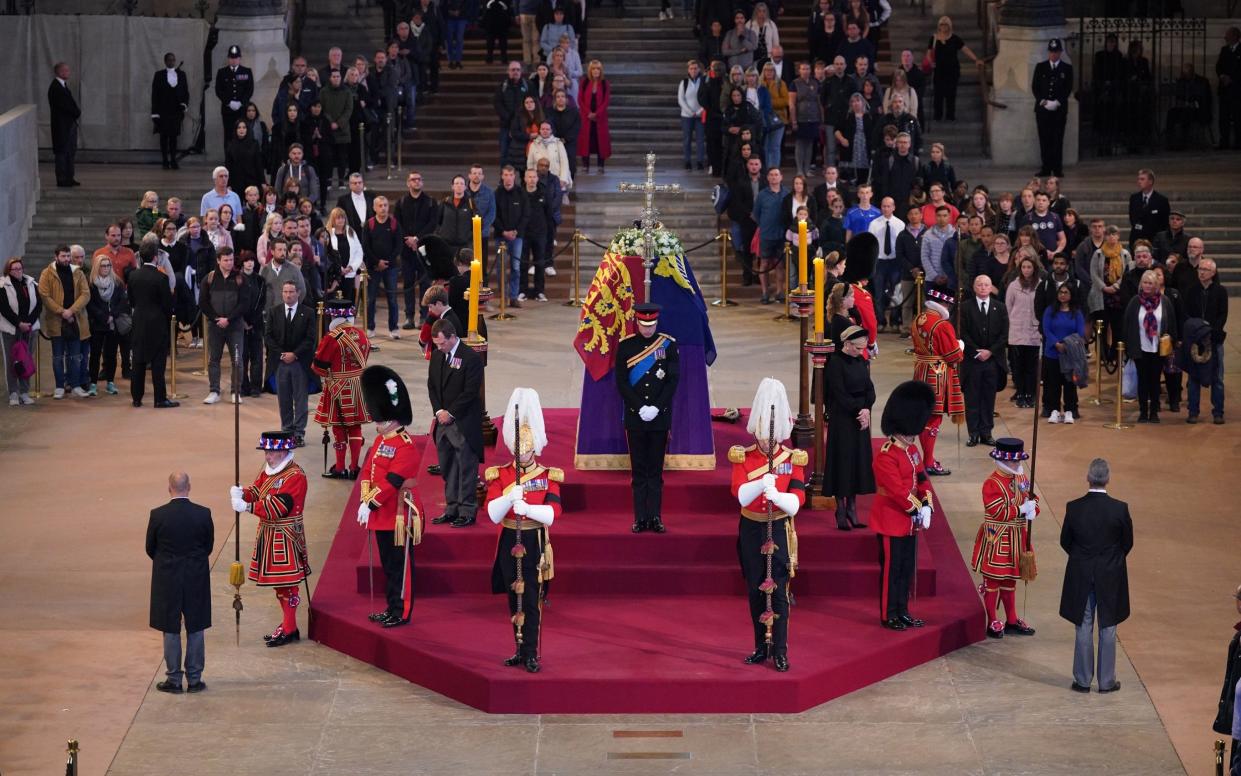Westminster Hall damaged by the 250,000 mourners who paid respects to late Queen

More than 250,000 mourners filed past Queen Elizabeth II lying-in-state at Westminster Hall. The figures were hailed as “remarkable” and the entire operation was deemed a great success.
However, the 180-year-old Yorkstone floor did not fare quite so well. The carpet glued onto the floor of Westminster Hall to lessen the impact to the oldest remaining part of the original Palace of Westminster caused some damage, it emerged on Monday.
A House of Lords spokesman said: “As a consequence of the high-level continuous footfall through Westminster Hall during the lying-in-state some delamination to the Yorkstone floor has occurred.
“It has exposed some areas of bare stone that will blend in with the surrounding areas over time. This does not present a structural risk.”
The delamination means the colouring is different to the stone around it.
However, the spokesman played down fears that the damage could be permanent.
“That will blend in over time as it is exposed to the air so as it becomes unnoticeable,” they added.
Devastating fire
Some members of the House authorities are said to be concerned about the management of the 180-year-old stone during the lying-in-state, which managed to survive a devastating fire in 1834.
Major restorations were made to Westminster Hall from the 1740s onwards.
Between 1834 and 1837, Sir Robert Smirke lowered the floor to the level of a Purbeck stone floor, discovered by excavation and believed to be of Richard II’s time, and laid the present Yorkstone paving.
During these works, on October 16, 1834, a blaze broke out in the Palace of Westminster, caused by two underfloor stoves that ignited panelling in the Lords Chamber.
The Hall was saved, largely due to fire fighting efforts, although much of the rest of the Palace was lost.
24-hour wait
During the four full days of the lying-in-state in September, the queue of mourners waiting to pay their respects to the late Queen stretched for more than five miles along the River Thames, with some waiting for 24 hours to enter the Hall.
Occasionally, officials had to pause the queue because of the demand.
The thick beige carpet helped deaden the sound, as the queue snaked its way continuously through the hall.
Michelle Donelan, the Culture Secretary, said: “You saw so many thousands out there and I don’t think anybody can suggest that our late monarch didn’t deserve that send-off, given the duty and the selfless service that she committed to over 70 years.
“It was a great sense of the community coming together. I always think of our late monarch as the glue that brought society together.”

 Yahoo News
Yahoo News 
